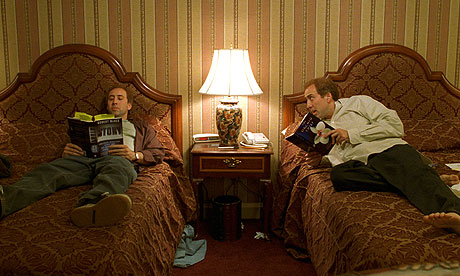
I don't know why I picked up Greg Williams' Another Man's Life - "funny, fast and honest, Nick Hornby with knobs on" – but pretty soon I wished I hadn't.
The hackneyed plot hinges on the sort of twin swap that makes my blood boil. Despite the fact that one is a married father with two young boys and the other, a high-flying, womanising, marketing executive, no-one can tell when identical twins Tom and Sean exchange places – with "hilarious" consequences.
Except that they aren't. Perhaps, as the mother of ten-year-old twin daughters, I'm over sensitive to twin stereotyping, but I'm fed up of the way literary twins are wheeled out by lazy writers in search of a neat plot either as spooky human photocopies or evil negatives. More than two thousand years later, Romulus and Remus still rule the roost.
Perhaps we should blame Shakespeare. The father of twins, one of whom died aged 14, returned to the theme over and over again.
In children's literature, we can read about "terrible" twins – from Nicola Baxter's The Brave Little Train to Roger Hargreaves' Little Miss Twins, not to mention Enid Blyton.
From Tweedledum and Tweedledee, to The Bobbsey Twins and all those other twins from children's books with cutesy similar-sounding names in between, siblings are seen as a 'unit'. These are two halves of the same whole rather than fully rounded individuals who can do perfectly well thank you in their own right.
In the teen series Sweet Valley High, we are treated to The Evil Twin and The Return of the Evil Twin. Just as the media are fascinated by "amazing" twin stories, so are authors – with teen characters stealing their sister's boyfriend or hoodwinking teachers.
And it's no better in books for adults. The imaginatively titled Bad Twin, a spin-off from the TV series Lost, by the fictional author Gary Troup, is perhaps the most obvious example in a crowded field. Good twin Zander is a leading light in a family business whereas bad twin Cliff is a rogue who has vanished. Or there are the Angelfield twins in Diane Setterfield's The Thirteenth Tale or Angelica and Lily in David Lodge's Small World.
These preconceptions can be irritating. I know parents who either won't read these simplistic yarns to their children or choose to leave bits out. They prefer not to tell their offspring they are "terrible" just because they have a brother or sister who happened to be born within seconds or minutes of them. And because they want to encourage independence and confidence, they shy away from some stories altogether. But it's the laziness of it all that really drives me mad.
Just look at what happens when authors don't fall victim to this tide of stereotyping? One shining example is Jacqueline Wilson. In Double Act and Twin Tales she gives each character her customary contemporary, spiky personalities with traits that aren't reliant on being part of a multiple birth family. And I loved The Girls by Lori Lansens. I found her exploration of conjoined twins, each with their own preoccupations, passions and unique traits, convincing and moving. It's remarkable that having encountered so many stories where the twins are "too" close, the one story that stays with me is one of sisters who are joined at the head.
But there must be more. Me and my twin daughters would love to hear of the ones we've been missing – independently, and for our own reasons, of course.

